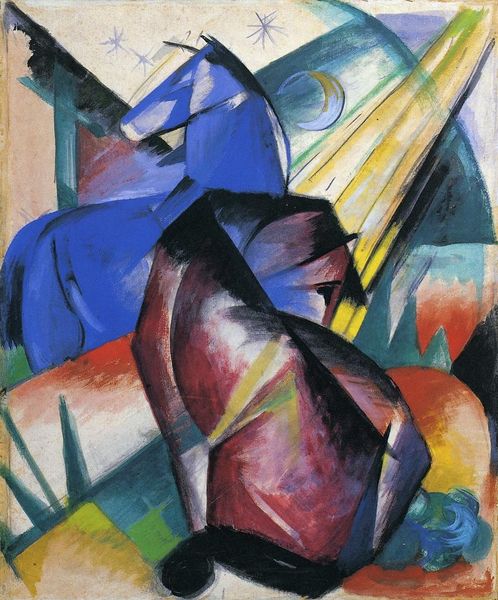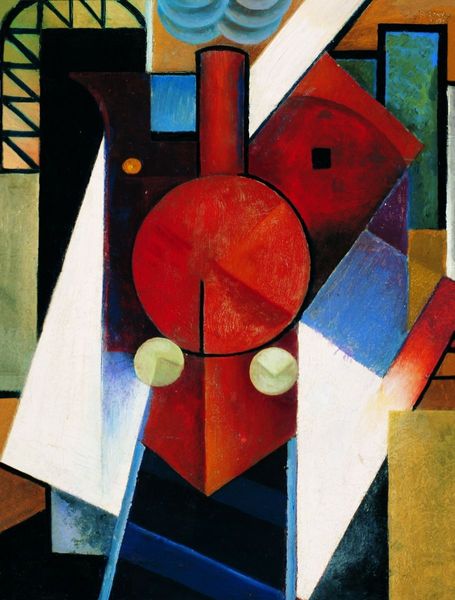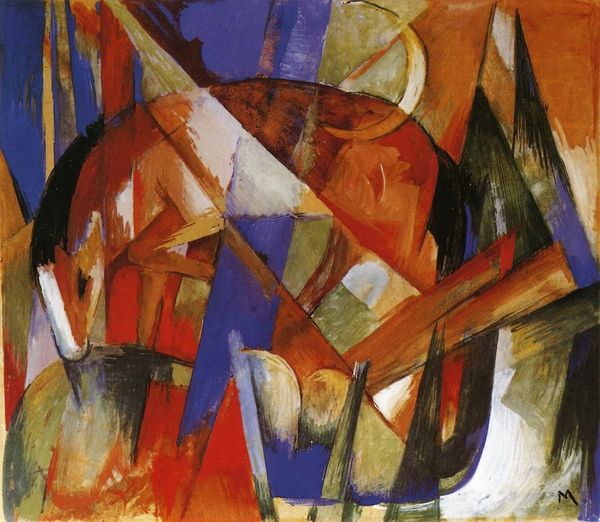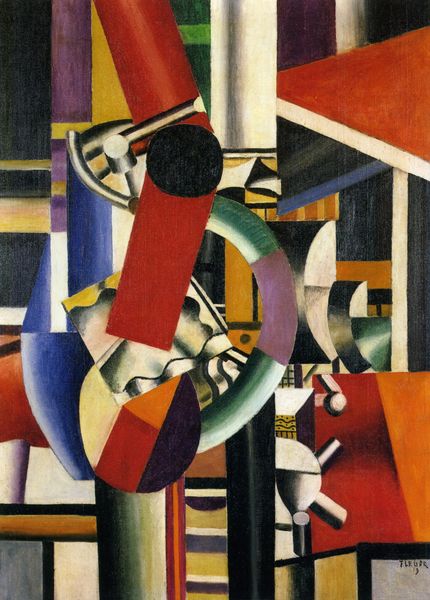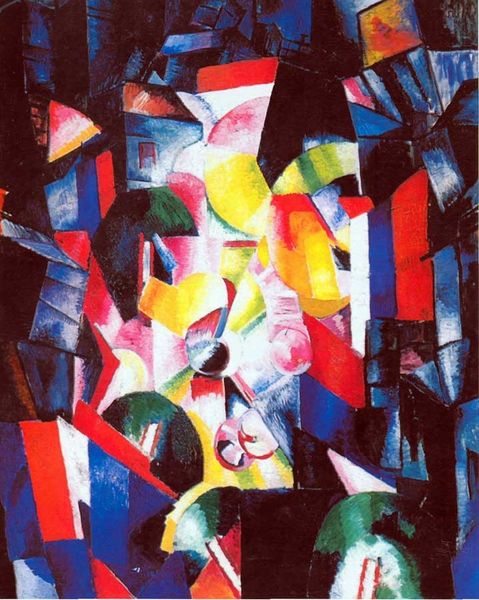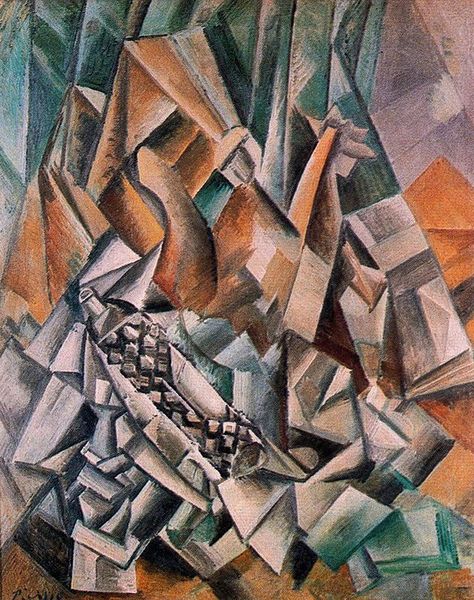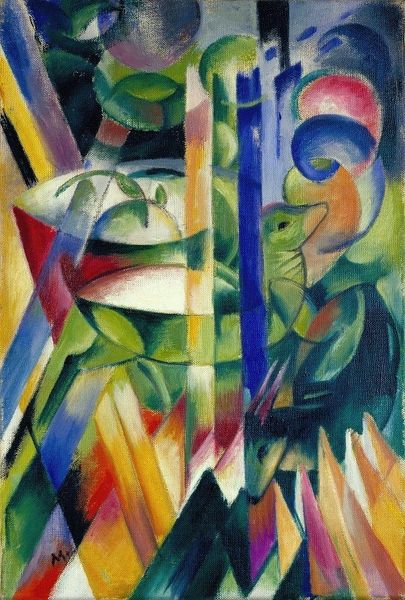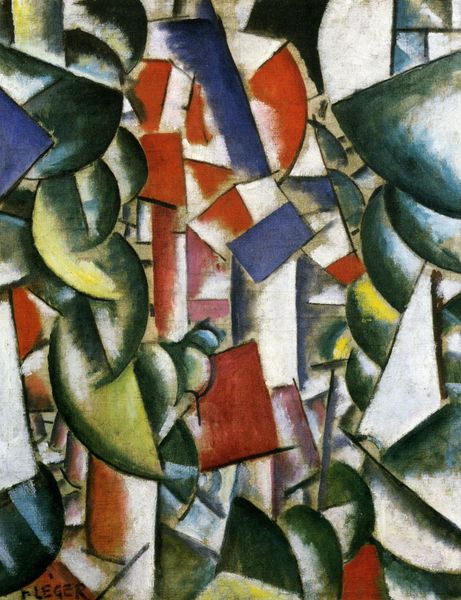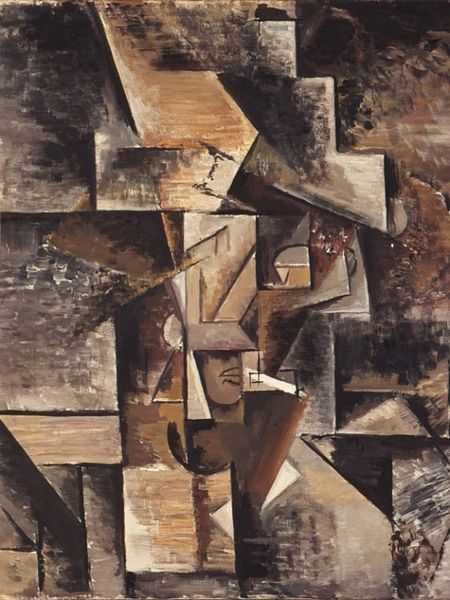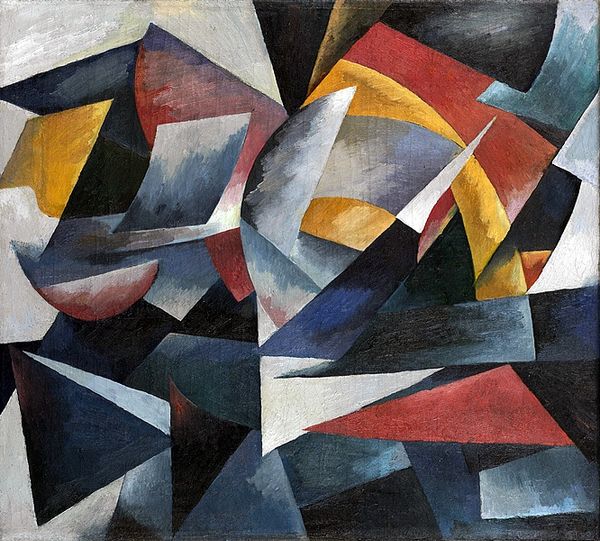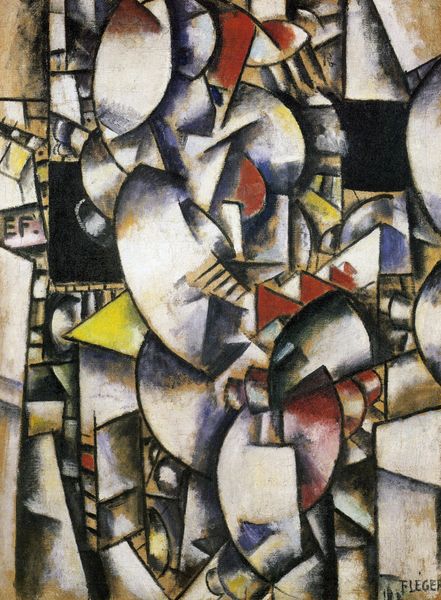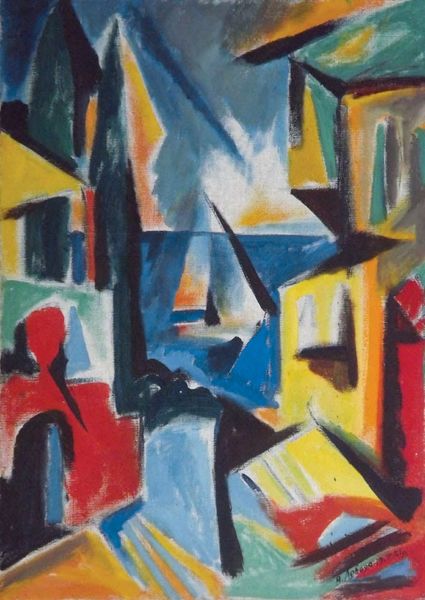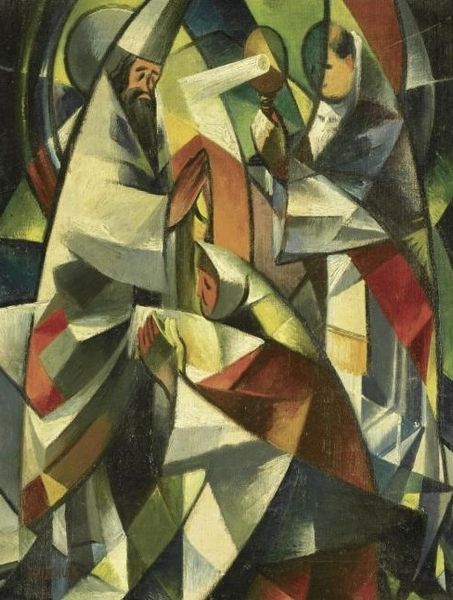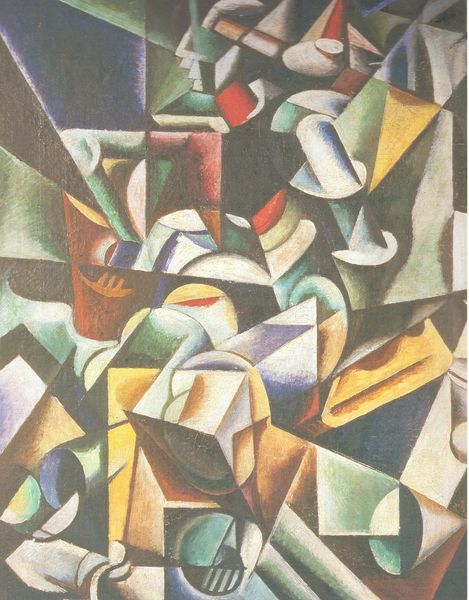
oil-paint
#
animal
#
oil-paint
#
landscape
#
german-expressionism
#
abstract
#
form
#
oil painting
#
geometric
#
expressionism
#
abstraction
#
expressionist
Copyright: Public Domain: Artvee
Editor: This is Franz Marc’s "The Foxes," painted in 1913. It's an oil painting, and it strikes me as a very anxious depiction of these animals, all sharp angles and intense color. What do you see in this piece that perhaps connects it to the period it was made in? Curator: Well, the intense abstraction is key. Marc was deeply involved in German Expressionism, a movement reacting against increasing industrialization and urbanization. How do you think this anxiety manifests in the work’s formal elements? Editor: I suppose in the fragmentation of the foxes themselves – they almost disappear into the landscape. It’s unsettling, like the world is devouring them. Curator: Precisely. The fracturing reflects a societal unease with a world rapidly changing. And remember, this was painted right before World War I. Many Expressionist artists saw themselves as seers, predicting the chaos and violence to come. How might this premonition manifest? Editor: Perhaps the limited color palette contributes. It feels muted, earthy, even bloody. Curator: Exactly! Consider also how Marc, like many artists in "Der Blaue Reiter", believed animals possessed a spiritual purity lost to humanity. His use of animal subjects becomes a commentary on the corruption of modern society, the impending war destroying innocence and natural harmony. Do you find his symbolism still resonates today? Editor: Absolutely, the painting's warning about environmental destruction and social fragmentation is unfortunately still very relevant. Curator: Indeed, “The Foxes” reminds us that art doesn’t just reflect its time but continues to speak to our present anxieties. Editor: I hadn’t thought about it in that context. That makes this much more than just a painting of foxes. Thank you!
Comments
No comments
Be the first to comment and join the conversation on the ultimate creative platform.
